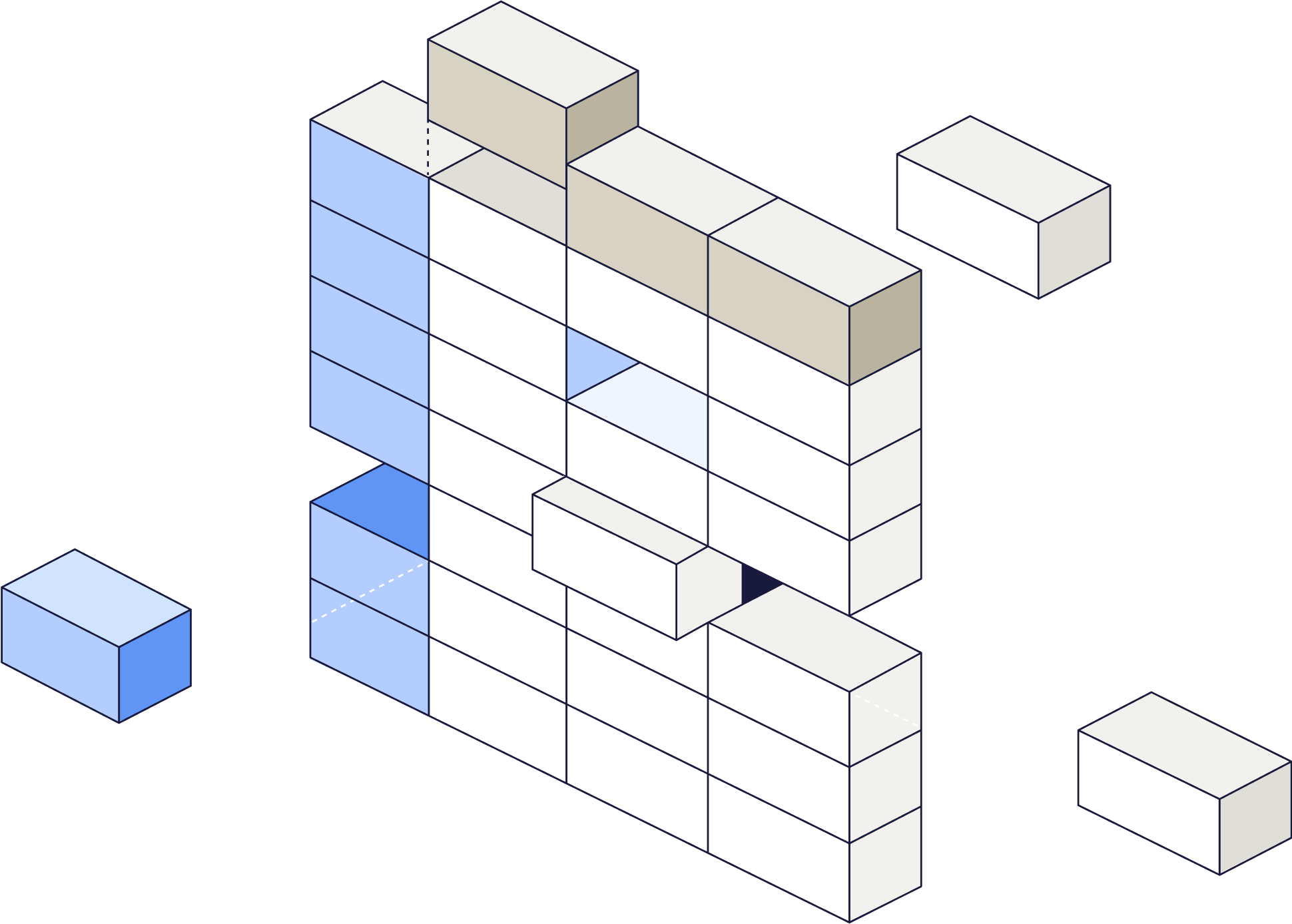A company’s income statement (or profit and loss statement) is arguably the most important financial report because it helps you answer two high-level questions about the business: can you continuously generate revenue? And, can you do so profitably?
There are hundreds of different metrics that could go into answering those two questions. But at the highest level, looking at your SaaS P&L is how you understand your top-line and bottom-line growth.
It’s not enough to just report on the final top-line and bottom-line growth numbers. You have to drill into the “why” behind them. And the way to get to these “whys” is to understand where each line begins and how to leverage each one to make more informed, strategic decisions around the business.
Table of Contents
What Is Top-Line Growth?
Top-line growth tells a company how effective they are at generating sales via an increase in gross sales and/or revenue over a specific period of time (month over month, quarter over quarter, or year over year).
At the top of the P&L or income statement, you’ll of course find the top line, which displays the company’s revenue generated through sales of products and/or services.
Finance tracks top-line growth as a function of financial reporting. But can go a step further to analyze the numbers and uncover insights for revenue teams. Depending on how you dig into the numbers, you can help sales and marketing understand whether they’re reaching the right target audience, sales tactics are working, return on ad spend is sufficient, and advertisements and campaigns are generating new leads that convert to sales.
What Is Bottom-Line Growth?
The bottom line displays a company’s net income after general operating costs (salaries, software costs, payments to other vendors, etc.), depreciation, income taxes, and other expenses have been subtracted from the top-line revenue.
Bottom-line growth, then, shows the trends in profitability for your company. But when you dig deeper, you can use those trends to understand changes in expenses over time as well as help with financial planning.
When you spot patterns in expense changes and bottom-line trends, you can approach functional departments about cost-cutting measures or opportunities to improve efficiency.
What Is the Difference Between the Top and the Bottom Line?
Top line refers to a company’s total revenue or gross sales, while bottom line refers to its net income.
In theory, you’d want to see top-line and bottom-line growth trend upward together at nearly the same rate. Bottom-line growth stresses efficiency, yet any process improvements won’t necessarily affect the top-line growth rate. This shows a company that they are becoming more efficient in their operations by increasing their net profits without increasing the amount of revenue they are generating.
Top-line growth emphasizes improving sales pipeline metrics and revenue, yet bottom-line growth may not increase due to no changes in operating efficiencies. In this situation, the company needs to look into its operating expenses and processes in order to cut costs and see the bottom line grow.
What Top- and Bottom-Line Growth Tell You About the Success of Your Business
The top line and bottom line are inextricably linked by the income statement. But that doesn’t mean every company prioritizes both at the same time. Especially for funded companies, your growth priority depends on the maturity of the business.
When you’re early-stage (Seed through Series B), you’re in a growth-at-all-costs mindset. You’re trying to maximize top-line growth to capture market share and capitalize on the market opportunity you laid out for early investors. At these stages, you assess the health of your business by tracking pure ARR growth. It’s what shows you you have a product-market fit. And then, as you hit your first renewal cycles, you can see how well you retain early and new customers.
When you get more mature (late Series B, Series C, and beyond), the focus is less on pure top-line growth (although growing ARR rapidly is always important) and more on the efficiency of your growth. You start measuring the health of your business more on profit margin and net income (especially in the run-up to an IPO). A successful company will prove to have a healthy profit margin and generous bottom line.
How to Grow Your Top and Bottom Lines
You have your income statement and can clearly see top- and bottom-line growth. But what do you do with that information?
The best finance teams can dig into the details and make strategic observations about their growth trends, leading to proactive takeaways that allow the company to flourish.
Boosting Top-Line Growth
If you want to improve top-line growth, you need to prioritize anything that increases revenue:
Double down on marketing campaigns that are working
These campaigns are bringing in potential customers. How much should you spend on ads to continue the momentum of your lead generation and conversion efforts? That depends on a few factors, like your budget, risk tolerance, and ROI on marketing and ad spend.
Add more account executives (AEs) to your sales team
Revenue provides the means to map out headcount planning across the company. Work with your revenue team on sales capacity planning and figure out how many new AEs to hire. More AEs mean more deals moving through the pipeline.
Update pricing to increase contract values
As your company matures, your product has, too. Evaluate your SaaS pricing strategy and product-market fit often. Consider your value-adds, like dedicated customer success representatives and new product lines and features that may not have been there in the first iteration of a contract but can be accounted for with new customers and renewals.
Boosting Bottin-Line Growth
Improving bottom-line growth means cutting costs by improving operational efficiency:
Comb through expenses to find opportunities to cut back
Cutting unnecessary costs allows your organization an opportunity to really dive into how each department drives the most value.
Find ways to optimize marketing spend
New customers enter the pipeline when they’re ready — and they have many ways to discover your company’s offerings. Finance can observe where performance is improving or dropping to help marketing evaluate what’s financially working and what’s not to help guide the next campaign.
Invest in customer success to drive up net revenue retention
Your customers pay for a product or service, but they won’t renew if they run into issues on a consistent basis. Customer success teams are a touch-point for customers, serving as representatives that can assist them and gather feedback to nurture the relationship and keep customer lifetime value and net revenue retention growing.
How Mosaic Can Help You Analyze Top Line vs. Bottom Line
The Mosaic Strategic Finance Platform prioritizes data integrity and adaptability through automation and financial business intelligence.
By automating data collection and aggregation from core systems of record, Mosaic makes it easy to track top-line and bottom-line growth — and even easier to analyze them on a deeper level so you can collaborate effectively with other departments to find solutions to top-line growth and bottom-line growth challenges.
Track Sales Metrics for Top-Line Growth
Top-line growth doesn’t just tell you about your total revenue — it helps evaluate your sales and marketing efforts.
Mosaic integrates with your CRM and HRIS. Finance can then easily analyze sales performance metrics in the context of headcount data. For example, look at your sales ramp rate by using the historical data to track their start date to full sales quota. From there, you can optimize headcount planning that will drive revenue.
Top-line growth relies on new customers alongside current revenue, which is why it’s important to analyze customer retention beyond the numbers. Dig into your net revenue retention, gross revenue retention, and logo churn to understand which product lines are most successful and which segments of your audience are best fits for the product.
And for more granularity into your net revenue retention and ARR, the finance team can set up and conduct a cohort analysis. The more you focus on selling to those effective segments (or improving ineffective ones), the better your top-line growth will be.
Track Expenses and Efficiency Metrics for Bottom-Line Growth
Expense change graphs show you how your costs are evolving period over period. And you can look at the account level to see if there are specific vendors that are driving up costs across the organization. There’s a variety of automated metrics in the platform, including:
- Expenses by vendor. This information is pulled from your ERP to pull your total expenses per vendor.
- Expense composition. Dig into department spend and drill further into payroll, campaigns, vendors, and other expenses.
- Expense changes. The cost of goods sold recorded alongside operating expenses and other expenses.
You can also track financial efficiency to understand the ROI of your spending and where you can improve the ROI of your cost of revenue. At a high level, the SaaS magic number is ideal for early-stage companies who want to consider customer acquisition costs alongside revenue generation. More mature companies gain high-level insights through the rule of 40, which compares revenue growth to profitability.
For deeper insight into efficiency, track your net revenue retention and LTV:CAC ratio. These metrics consider overall customer retention and serve as temperature checks for where internal processes may be snagging customer satisfaction.
Use the Top-Line Planner to Forecast Growth

The (Top and) Bottom Line: Unlock Growth Insights with Mosaic
Income statements and balance sheets are forever, but losing hours to comparing spreadsheets and triple-checking numbers doesn’t have to be. Mosaic offers a chance to reclaim invaluable time through out-of-the-box metrics and visualizations that update in real-time.
Request a personalized demo and see how Mosaic seamlessly integrates into your daily operations to not only make finance processes more efficient but allow your finance team to offer proactive insights that lead to strategic decision-making that benefit your top- and bottom-line growth, and so much more.
Top-Line vs. Bottom-Line FAQs
What is the top line?
A company’s top-line refers to the top line of their P&L statement, which displays revenue generated through total sales of products and services. Analyzing top-line growth, therefore, means evaluating your marketing and sales growth and performance to make corresponding business decisions.
What does bottom-line mean?
Is top-line or bottom-line growth more important?
Why might a company focus more on top-line growth at certain stages and more on bottom-line growth at others?
Own the of your business.

